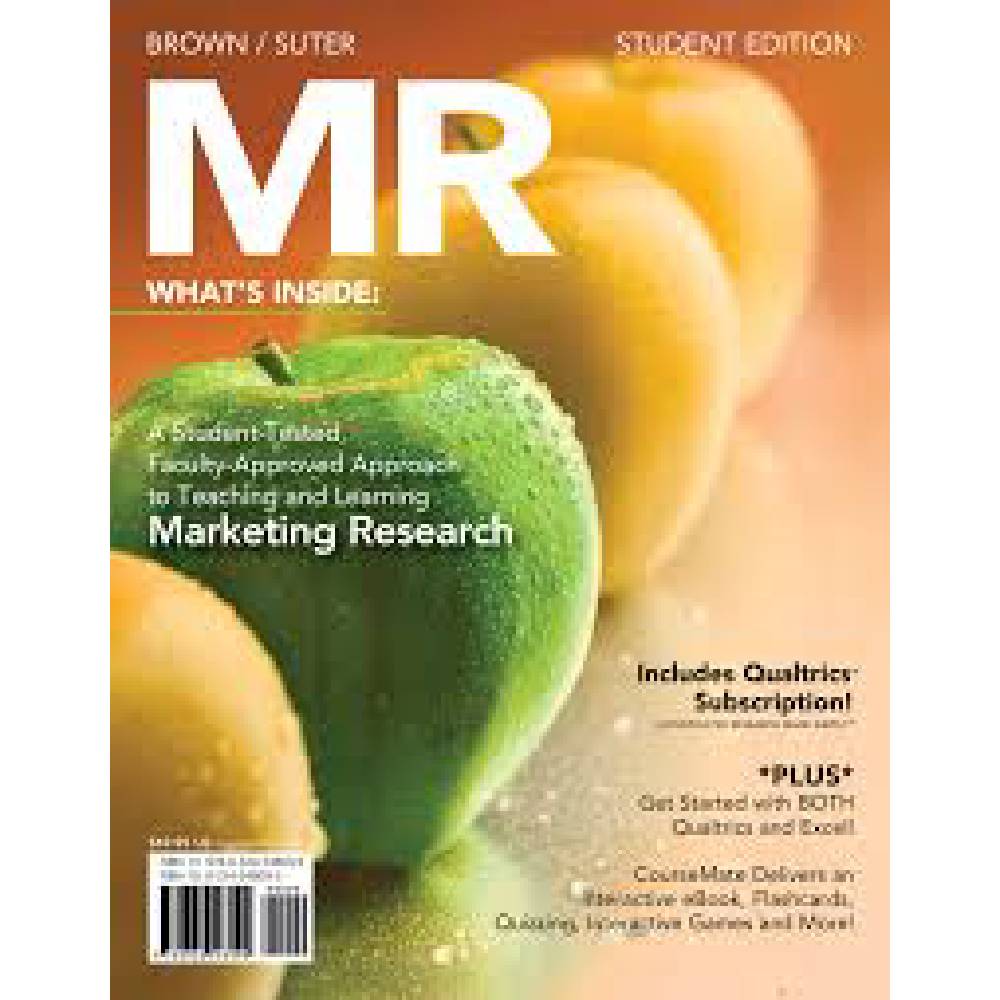MR 1st Edition By Tom J. Brown – Test Bank
$55.00
MR 1st Edition By Tom J. Brown – Test Bank
You will receive this product within 24 hours after placing the order
MR 1st Edition by Tom J. Brown – Test Bank
Chapter 11—Data Preparation for Analysis
MULTIPLE CHOICE
1. The process of editing involves:
a. categorizing the data.
b. counting the number of cases that fall into the various categories.
c. inspecting and correcting each questionnaire or observation form.
d. developing dummy tables that suggest how each item of information will be used before data is collected.
e. transforming the raw data into symbols.
ANS: C PTS: 1
NAT: AACSB Analytic | CB&E Model Research | Bloom’s: Knowledge
2. The main aim of editing is to:
a. ensure that the analysis is valid.
b. impose maximum quality standards on the raw data.
c. establish a balance between costs and accuracy.
d. establish codes for the raw data.
e. establish minimum quality standards for the raw data.
ANS: E PTS: 1
NAT: AACSB Analytic | CB&E Model Research | Bloom’s: Knowledge
3. Which of the following might NOT be an appropriate strategy for dealing with missing information on a questionnaire?
a. Throw out the entire questionnaire.
b. Overlook the missing information and code the remaining answers.
c. Substitute information based on the responses of similar respondents.
d. Both a and c only.
e. All of the above might be appropriate.
ANS: E PTS: 1
NAT: AACSB Analytic | CB&E Model Research | Bloom’s: Knowledge
4. Which of the following is TRUE?
a. When preparing data for computer analysis, it is advisable to use alphabetic characters to code the data rather than numbers since alphabetic characters allow 26 codes per column while numbers only allow 10; thus, one can minimize the number of computer records per observation with alphabetic characters.
b. When preparing data for computer analysis, it is advisable to use as few records per observation as possible and thus the use of multiple entries per column is strongly recommended.
c. When a questionnaire requires more columns of code than will fit in a record, researchers should allow for a record sequence number along with a respondent identification number on each computer record.
d. A researcher is coding a variable that has ten possible answers. The researcher needs to provide two columns in the computer record when developing the codebook.
e. Data should be collapsed across groups when coding.
ANS: C PTS: 1
NAT: AACSB Analytic | CB&E Model Research | Bloom’s: Knowledge
5. Which of the following statements is(are) true regarding coding?
a. The classes should always be mutually exclusive and exhaustive.
b. Multiple responses should never be coded.
c. Coding closed-ended questions is more difficult than coding open-ended questions.
d. Alphabetic codes should be assigned to the classes.
e. Both a and b are true statements.
ANS: A PTS: 1
NAT: AACSB Analytic | CB&E Model Research | Bloom’s: Knowledge
6. The most difficult questions to code are:
a. open-ended questions.
b. dichotomous questions.
c. questions using Stapel scales.
d. multichotomous questions.
e. questions using Likert scales.
ANS: A PTS: 1
NAT: AACSB Analytic | CB&E Model Research | Bloom’s: Knowledge
7. Consider the following categories of ages.
18-24
25-34
35-44
45-54
55 and over
They are _____ and _____, but not _____.
a. closed-ended, exhaustive, mutually exhaustive
b. open-ended, mutually exclusive, exhaustive
c. closed-ended, mutually exclusive, exhaustive
d. exhaustive, mutually exclusive, open-ended
e. None of the above.
ANS: C PTS: 1
NAT: AACSB Analytic | CB&E Model Research | Bloom’s: Knowledge
8. Which of the following is NOT a recommended coding convention?
a. Use as many columns as necessary for the field.
b. Locate only one character in each column.
c. Use alphabetic codes if possible.
d. Use consistent codes for similar types of responses.
e. Code in an identification number for each questionnaire.
ANS: C PTS: 1
NAT: AACSB Analytic | CB&E Model Research | Bloom’s: Knowledge
9. Which of the following questions do you think would be the easiest to code?
a. What are the three characteristics that you find most pleasing when using product X?
b. Have you ever used product X? _____ Yes _____ No
c. What religious denomination do you consider yourself?
d. Please specify the type of television set in your home?
e. How do you feel about commercials on children’s TV shows?
ANS: B PTS: 1
NAT: AACSB Analytic | CB&E Model Research | Bloom’s: Application
10. Which of the following is FALSE with respect to the coding of open-ended questions?
a. The use of several coders can lead to inconsistent treatment of answers.
b. Open-ended questions are generally more difficult to code than closed-ended questions.
c. The coder must determine categories on the basis of answers that are not always anticipated.
d. Coding open-ended questions is typically less expensive than coding closed-ended questions.
e. When the task requires multiple coders, each coder should be assigned parts of the questionnaire for all questionnaires rather than a subset of the questionnaires.
ANS: D PTS: 1
NAT: AACSB Analytic | CB&E Model Research | Bloom’s: Knowledge











Reviews
There are no reviews yet.